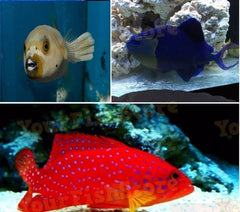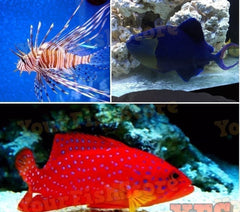Banded Cat Shark Md/Lrg - Approx 8" - 10" Each - Marine Fish -

BANDED CAT SHARK MD/LRG - APPROX 8" - 12" EACH - MARINE FISH - - FREE SHIPPING
Minimum Tank Size: 240 gallons
Care Level: Moderate
Temperament: Aggressive
Reef Compatible: No
Water Conditions: 72-78° F, dKH 8-12, pH 8.1-8.4, sg 1.020-1.025
Max. Size: 3' 6"
Description
The Banded Shark is considered one of the best sharks for the home aquarium because of it’s smaller size compared to many other sharks. They prefer reefs and tide pools and are frequently found sitting in sandy areas on the ocean floor.
Sharks should not be exposed to copper based medications as this will cause illness. Like all sharks, this one has the possibility of inflicting a very painful bite, especially when provoked. Care should be taken when cleaning the display tank and feeding. Sharks tend to act aggressively toward other fish, particularly smaller ones. Be sure to house with larger, aggressive species.
Diet
Feed a varied diet consisting of large chunks of meaty foods. These foods include krill, raw table shrimp, squid, clam and mussel. With time, Rays will usually learn to eat larger sinking pellet foods.
Shipping Note
All sharks and rays over 18” need a shipping crate for transport. After these shipping crates are packed for transport with animal(s) and water, they will typically weigh more than 100lbs which is heavier than what can be shipped via FedEx. These shipments have to be shipped via air freight. Our carrier of choice is South West Airlines but we do have several to choose from. The customer will be responsible for all air freight charges to be paid at the time the shipment is picked up from their local airport. Please call or email us and we will gladly give you a freight quote for this item.
The Black Banded Cat Shark is a bottom dwelling shark that is common in the home aquarium. It will eat any crustacean in the aquarium. It stays relatively small, but requires at least a 360 gallon or larger aquarium as an adult. It requires sand as the substrate as the abdomen is easily scratched by a coarser substrate, which may lead to an infection. It should never be exposed to copper-based medications.
QUESTIONS & ANSWERS
Have a Question?
Be the first to ask a question about this.














